As a professional copywriting journalist, I know that creating a garden in your backyard can seem like a daunting task, especially if you’re a beginner. But don’t worry! Mastering how to make a garden in the backyard involves several simple steps that can help you get started.
The first step is to consider what you want to plant in your backyard garden. Whether it’s vegetables, herbs, or flowers, choosing the right plants is crucial to the success of your garden. Next, you’ll need to choose the best spot in your yard that receives 6-8 hours of full sun each day and has easy access to a water source.
Clearing the ground is the next step. You’ll need to remove all the weeds and sod before you can start planting. This can be done by cutting it out or by using the lasagna gardening method. Improving your soil is also essential. Testing and improving your soil by adding organic matter like compost is highly recommended.
Preparing your planting beds comes next. It involves loosening the soil and mixing in compost. Picking your plants based on your preferences and the compatibility of different plants is crucial for successful backyard gardening. Finally, water your garden at the right time, taking care not to overwater or underwater. These simple steps will help you create a beautiful and productive backyard garden.
Key Takeaways:
- Choosing the right plants is crucial to the success of your backyard garden.
- Clear the ground of weeds and sod before planting, and improve your soil by adding organic matter.
- Prepare your planting beds by loosening the soil and mixing in compost.
- Choosing the right time to water your garden is essential.
Choosing What to Plant: Vegetables, Herbs, or Flowers
The first step is to consider what to plant, whether it’s vegetables, herbs, or flowers. This decision depends on your personal preferences and the maintenance requirements of each. As a beginner, it’s best to start small and choose plants that are easy to grow in your area.
When selecting plants, it’s important to consider your climate, soil, and sunlight conditions. Some easy-to-grow vegetables for beginners include cucumbers, tomatoes, and green beans, while popular flowers include zinnias, marigolds, and petunias. If you want to grow herbs, popular options include basil, chives, and cilantro.
When deciding on your plants, also consider their seasonal preferences. Some plants grow best in spring, while others thrive in summer or fall. Keep in mind that planting times may vary depending on your location and hardiness zone.
Starting a simple backyard garden with a few plants is a great way to get started. As you gain experience and confidence, you can expand your garden and try new varieties. Remember to choose plants that you enjoy and that fit your gardening goals.
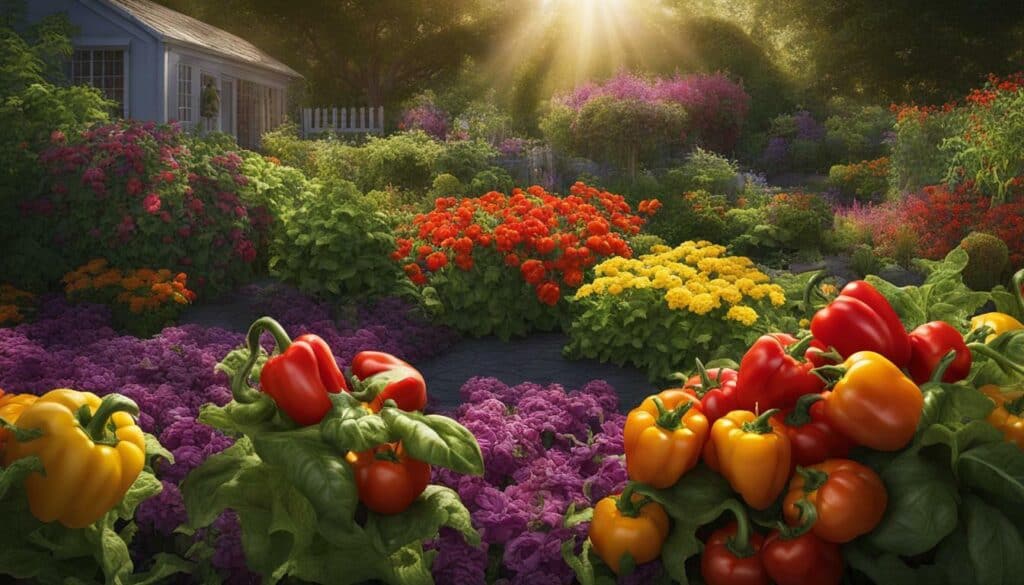
Companion Planting and Garden Design
When planning your garden, you may also want to consider companion planting. This technique involves planting certain plants together to improve each other’s growth and deter pests. For example, planting basil near tomatoes can help improve their flavor and ward off pests.
You may also want to consider the design of your garden. Raised beds and inground gardens are popular options, and vertical gardening is a great choice for small spaces. When selecting a design, consider factors such as your available space, budget, and aesthetic preferences.
Ultimately, the most important thing is to choose plants that work well for your specific garden and climate. Take your time, do your research, and enjoy the process of creating a beautiful and productive backyard garden.
Picking the Best Garden Spot: Sunlight and Water
The next step is to pick the best garden spot that receives 6-8 hours of full sun each day and has easy access to a water source. Most vegetables and flowering plants require full sun, so it is important to observe your yard for areas with full sun, partial shade, or full shade. While tomatoes need full sun, other plants like hostas and ferns can thrive in shady areas.
Choosing a flat spot for your garden is also crucial to avoid complications and ensure easy access to a water source.
Clearing the ground of weeds and sod is necessary before planting. This can be done by cutting out the sod or using the lasagna gardening method, which involves covering the area with newspaper and layering it with compost or potting soil.
| Tip: | Consider using a garden design software to plan your garden layout. |
|---|
Testing and improving the soil is also essential for successful gardening. The soil should be tested by sending samples to the local cooperative extension office. Adding organic matter like compost to the soil helps enrich it and improve drainage.
Preparing the planting beds involves loosening the soil to facilitate root growth. This can be done by tilling with a mechanical device or digging by hand. It is important to work the soil when it is moist enough to form a loose ball but dry enough to crumble.
After preparing the bed, the next step is to choose appropriate plants based on the desired garden type, such as vegetables, flowers, or herbs. Planting can be done from seeds or transplants, following the instructions provided on seed packets or plant tags.
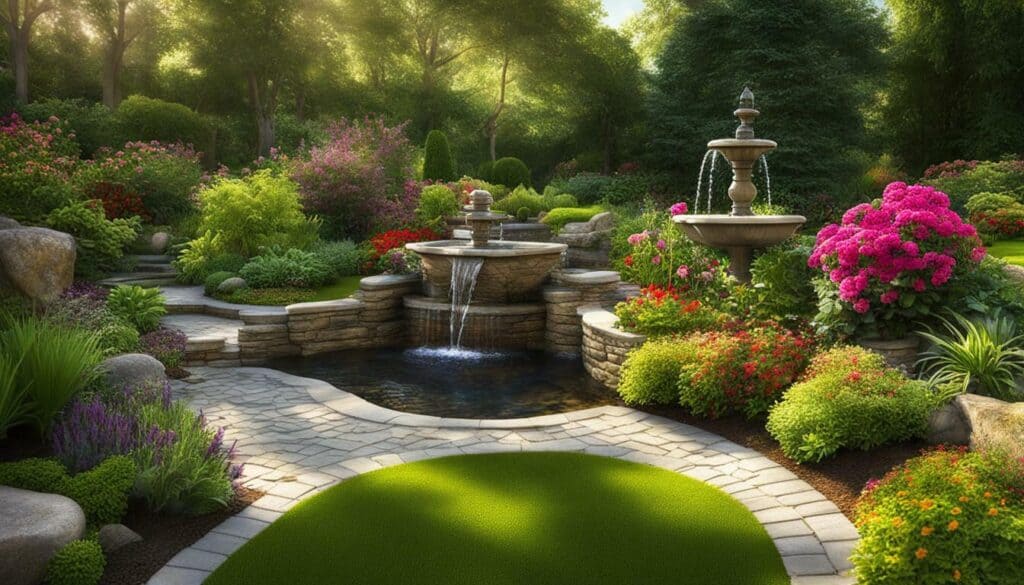
Watering the garden at the right time is crucial for plant health. Setting up an automatic watering system is recommended, such as using a battery-operated timer connected to a soaker hose or drip line. It is important to water newly planted seeds and seedlings regularly to prevent them from drying out.
In conclusion, selecting the best garden spot involves considering the amount of sunlight and accessibility to water. Clearing the ground, testing and improving the soil, preparing the planting beds, choosing appropriate plants, and providing proper watering are essential steps to ensure a successful garden.
Clearing the Ground: Weed and Sod Removal Methods
Clearing the ground of weeds and sod is the next step in starting a garden, and it’s essential for creating a healthy growing environment for your plants. There are various methods to consider for effective clearing, and it’s important to choose the one that works best for your specific garden.
One option is to use the lasagna gardening method. This involves covering the area with five sheets of newspaper and a 3-inch layer of compost on top. This allows the compost and paper to decompose over several months, leaving behind a bed ready for planting. This method is particularly useful if you want to create a new bed without digging into the soil.
Another option is to cut out the weeds and sod in the area. Slicing under the sod with a spade and dividing it into sections for removal is an effective method. However, this method requires more work and time than the lasagna gardening method.
Before starting, it’s important to test and improve the soil by having a soil test done and adding organic matter, such as compost, to enhance nutrient levels and drainage. This will help ensure that your plants have the best possible chance of thriving.
Once the ground is cleared, it’s time to prepare the planting beds by tilling the soil and mixing in the organic matter. This will help loosen the soil and create a nutrient-rich bed for your plants to grow in.
When selecting plants, it’s important to consider the amount of sun they require and choose ones that are adapted to your climate, soil, and sunlight. Planting can be done through seeds or young plants, and it’s crucial to water at the right time and monitor the garden regularly to ensure that the plants are thriving.
By following these steps, you can successfully clear the ground and start your own garden. Whether you’re a seasoned gardener or new to the world of gardening, creating a DIY backyard garden is a fulfilling experience that can be both educational and rewarding.
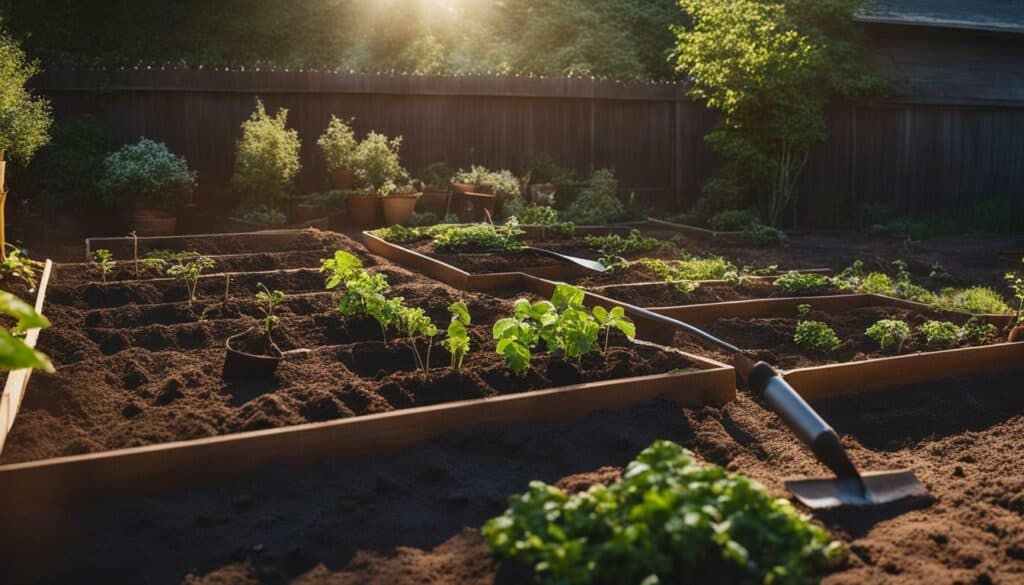
Picking the Best Garden Spot: Sunlight and Water
Testing and improving the soil is crucial, and adding organic matter like compost is recommended for optimal growth of backyard garden vegetables. But before adding organic matter, it’s important to pick the best garden spot.
Choosing a spot in the backyard with at least 6-8 hours of full sun is crucial for plants to grow well. Some vegetables and herbs can handle partial shade, but most flowering plants require full sun.
Easy access to a water source is also essential, whether through a hose, irrigation system, or watering can. Remember that plants need consistent moisture throughout the growing season, especially in hot and dry weather.
| Top Tips for Choosing the Best Garden Spot |
|---|
| Choose a spot with full sun for at least 6-8 hours a day. |
| Ensure the spot has easy access to a water source. |
| Consider the soil type and drainage, and avoid low spots prone to standing water. |
| Think about the proximity to your house and whether you can easily see and access the garden. |
Organic backyard gardening emphasizes the importance of soil health and fertility, as well as avoiding synthetic fertilizers and pesticides. Consider testing the soil through a soil test done by the county cooperative extension office or using a DIY kit to reveal any nutrient deficiencies or pH imbalances.
Once you’ve picked the best garden spot, prepare the soil by clearing the ground, loosening the soil, and mixing in organic matter. This will help ensure your plants have the nutrients they need to thrive.
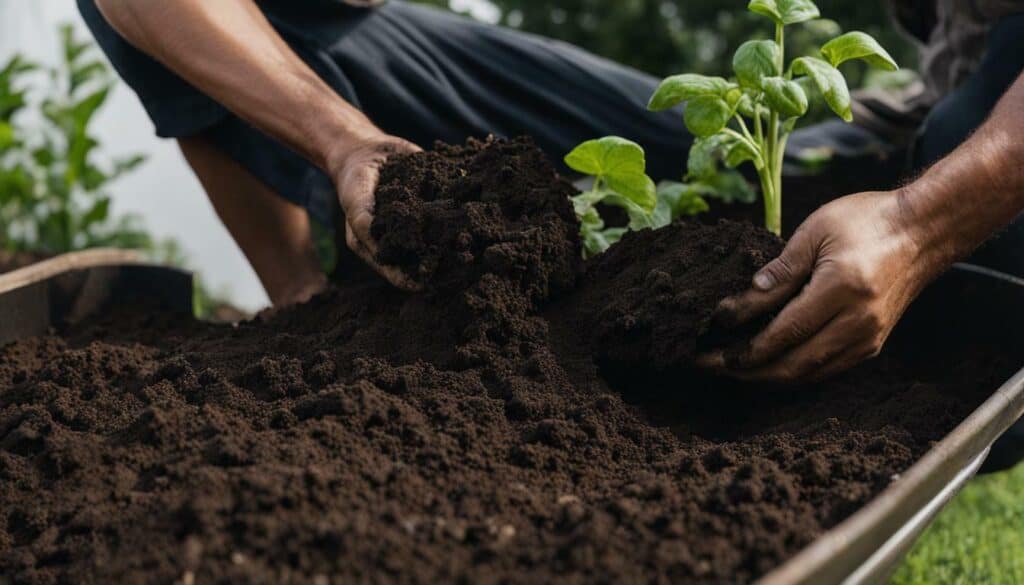
Adding compost is a simple and effective way to improve soil quality and fertility. Residential soil often needs a boost, especially in new constructions where topsoil may have been stripped away. Adding a layer of compost or a combination of potting soil and topsoil to the soil helps replenish essential nutrients and improve drainage. It is recommended to add 2-3 inches of organic matter to the soil when digging or tilling a new bed, or leaving it on the surface for established beds.
By picking the right garden spot, improving the soil, and adding organic matter like compost, you can set your backyard garden up for success. With the right preparation and maintenance, you can enjoy a bountiful harvest of backyard garden vegetables, herbs, or flowers.
Preparing the Planting Beds: Loosening the Soil for Root Growth
Preparing the planting beds by loosening the soil is important for root growth and nutrient access. This process is crucial for any garden, whether you’re growing backyard garden vegetables or backyard garden flowers. Before starting, you need to choose the right method for your garden’s size and your physical abilities.
There are two methods for preparing the beds: tilling or digging by hand. Tilling using a mechanical device such as a rototiller is useful for mixing in large amounts of amendments, but it is important not to overdo it. Over-tilling can damage the soil structure, making it difficult for roots to develop and absorb nutrients. For smaller beds, digging by hand is more practical. You can work the soil with a spade or spading fork.
Loosening the soil is crucial for roots to easily grow and access the water and nutrients they need. It’s best to work the soil when it is moist enough to form a loose ball in your fist but dry enough to fall apart when dropped. Gently turn the top 6-8 inches of soil, mixing in organic matter such as compost, to enrich the soil with nutrients and improve drainage.
Avoid walking on prepared beds as it can compact the soil. Compacted soil reduces the amount of oxygen available to the roots, hindering their growth and development. Therefore, it’s better to plant from the perimeter and avoid stepping on the bed.
When planting your garden, it is important to choose the right plants based on their adaptability to your climate, soil, and sunlight. Make sure to do your research on backyard garden vegetables or backyard garden flowers suitable in your area. Root vegetables such as carrots and radishes are good choices for loose sandy soil while fruiting plants such as tomatoes and eggplants thrive in fertile soil.
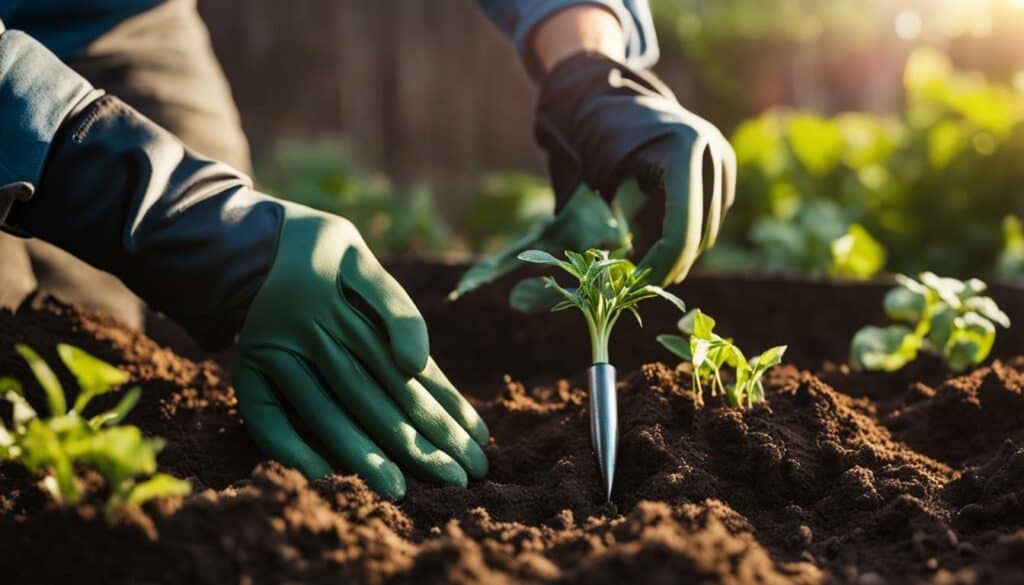
Picking the Right Plants: Seeds or Seedlings
Picking the right plants for your backyard garden is an important decision that requires some thought. The next step after deciding what type of garden you want to create, whether it’s for vegetables, herbs, or flowers, is choosing between seeds or seedlings. For a simple backyard garden, it’s best to choose plants that are easy to grow and maintain.
Seeds offer a wider variety of plant options and are generally more affordable, making them an attractive choice. However, they require more time and effort to grow. You’ll need to plant them at the right time and provide proper care until they are established. Seedlings, on the other hand, are already partially grown and can be transplanted directly into the garden, saving time and offering a higher chance of success.
When making this choice, consider the amount of sunlight your garden receives and your gardening experience. It is also important to prepare the soil properly and have a reliable watering system in place. You can find many resources online or in your local gardening store to help you make the right choice between seeds and seedlings for your garden.
Whether you choose seeds or seedlings, it’s important to plant at the right time and water them properly. Simple backyard gardens for vegetables or flowers can be a great way to start gardening and grow your own fresh produce or beautiful blooms.
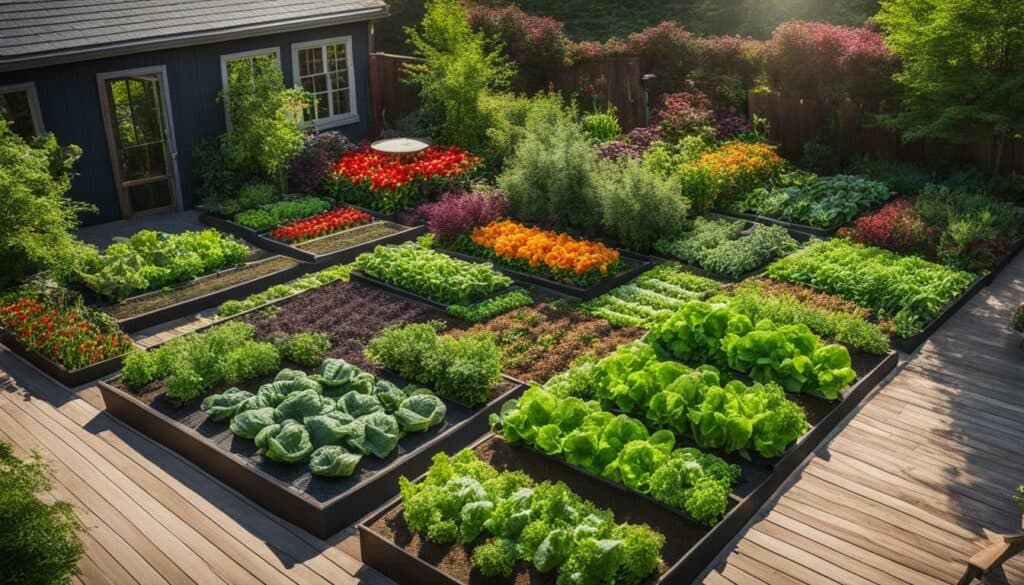
Remember, the decision of whether to use seeds or seedlings ultimately depends on your personal preferences and the specific needs of your garden. Take the time to research and plan before getting started, and your backyard garden will thrive and provide you with many enjoyable harvests for years to come.
Important Factors to Consider: Companion Planting and Garden Design
When starting a garden, there are several important factors to consider. First, consider what you want to plant and whether you want a vegetable, herb, or flower garden. Choose plants that your family will eat or be willing to try. Next, pick the best spot in your yard that receives 6-8 hours of full sun each day, with easy access to a water source. Clear the ground by getting rid of weeds and sod, either by cutting it out or using the lasagna gardening method. Test and improve your soil by having a soil test done to determine its nutrient levels and amend it with organic matter such as compost. Prepare your planting beds by loosening the soil to promote root growth. Pick plants adapted to your climate, soil, and sunlight, and start planting either from seeds or young plants. Ensure proper watering at the right time.
Other tips include choosing the best month to start the garden and learning about hardiness zones. It’s important to understand your USDA hardiness zone to choose suitable plants that can thrive in your region. Additionally, pairing companion plants that have similar sunlight and moisture needs can help with maximizing garden space and repelling pests.
Decide between raised beds or inground gardens, and consider vertical gardening or removing some grass from your lawn to create garden space. The benefits of using raised beds or inground gardens include better drainage, easier weed control, and the ability to add improved soil mixes. Vertical gardening is perfect for those with limited space, and it allows you to grow more plants in a smaller space. When removing grass, be sure to use a sod cutter to prevent regrowth and lay down mulch or landscaping fabric to prevent weeds from growing.
Optimize your garden soil by testing its nutritional content, pH level, and type, and amend it with compost or other organic matter. Knowing when to water your garden is just as important as how much to water it. An automatic watering system can help ensure your plants are getting the right amount of water at the right time.
Finally, spend time in your garden each day to observe and manage any problems, and harvest and enjoy the fruits of your labor. With proper planning and care, your DIY backyard garden can be a source of joy and abundance.
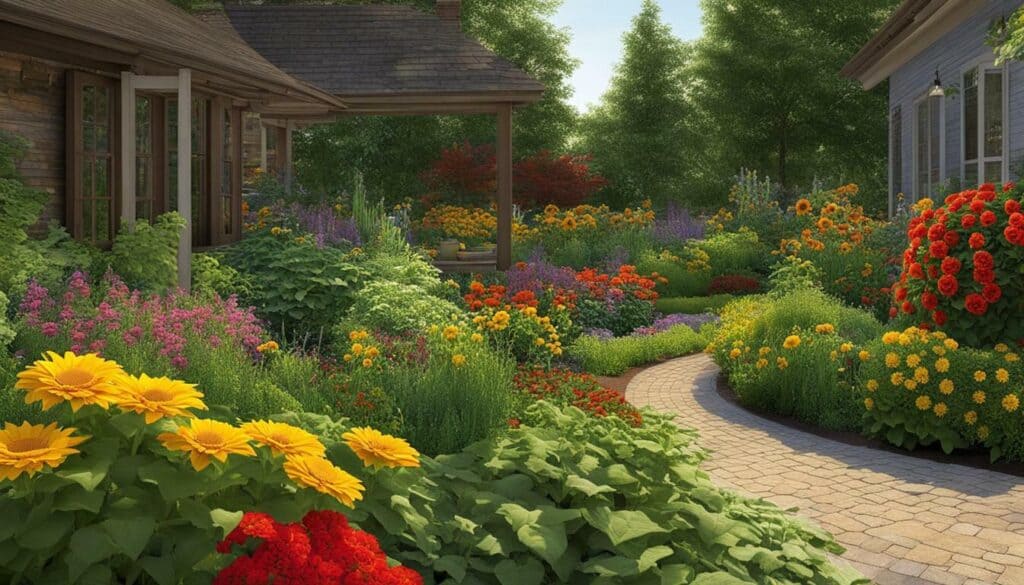
In conclusion, proper planning and preparation are essential to creating a successful backyard garden. By considering important factors such as companion planting and garden design, you can create a thriving garden that provides fresh produce or beautiful flowers for you and your family to enjoy.
Picking the Right Plants: Seeds or Seedlings
When starting a backyard garden, one crucial decision is choosing the right plants to grow. Depending on your preferences, you can choose vegetables, herbs, or flowers. Keep in mind that some plants require more sunlight than others, so be sure to choose plants that are adapted to the amount of sunlight your garden spot receives.
It’s best to start small and choose a variety of plants that are suitable for your climate, soil, and sunlight. This way, you can learn which plants grow best in your garden and adjust accordingly. You can either start with seeds or seedlings, depending on your preference and skill level.
If you choose to start with seeds, make sure to plant them at the right time and at the correct depth. Seeds are often more affordable than seedlings and provide a wider variety of plant options. On the other hand, if you want to skip the germination process, you can purchase seedlings from local nurseries or garden centers.
Remember to choose plants that you will enjoy and that will provide a good yield. Some easy-to-grow vegetables you may consider for your backyard garden include tomatoes, peppers, lettuce, and green beans, while some easy-to-grow flowers include marigolds, zinnias, and sunflowers.
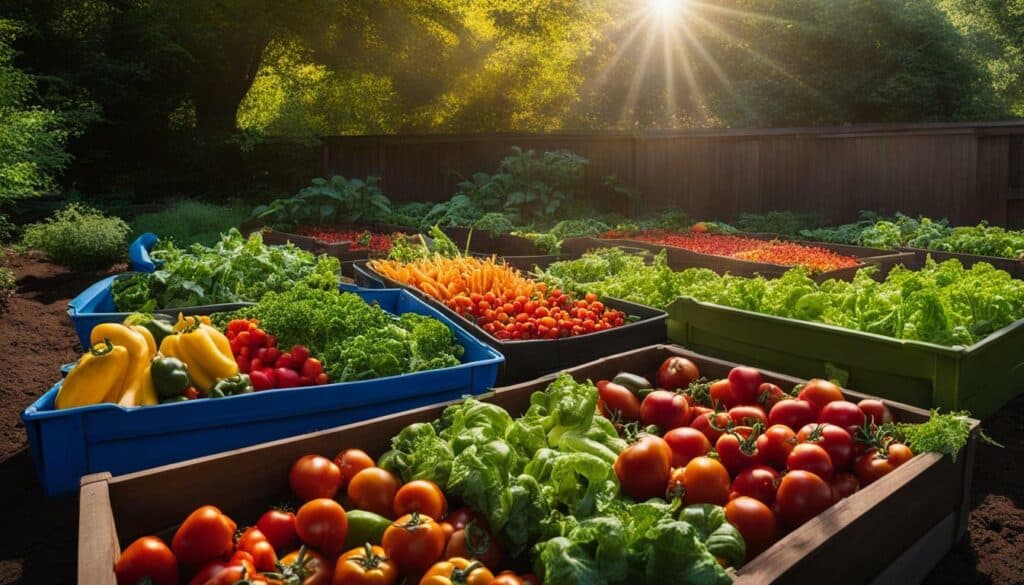
Expert tip:
Before choosing which plants to grow, it’s important to research the specific planting requirements of each plant. This will ensure that you choose plants that are compatible with one another and that you will have optimal growing conditions for each plant.
Picking the Right Plants: Seeds or Seedlings
When it comes to picking the right plants for your backyard garden, you have the option to start from seeds or seedlings. It’s important to choose plants that are suitable for your climate, soil, and sunlight requirements.
If you’re looking for a simple backyard garden, start with a few vegetables or flowers that are easy to grow, such as tomatoes, lettuce, or marigolds. You can purchase seeds or seedlings from a local nursery or garden center.
Before planting, it’s important to reference a planting guide specific to your area. A planting guide will help you determine the best time to plant and how to plant your seeds or seedlings for optimal growth.
Keep in mind that starting from seeds can be more cost-effective, but requires more time and patience. Seedlings are more expensive, but offer a head start in the growing process.
Once you have decided on your plants, it’s time to start planting.
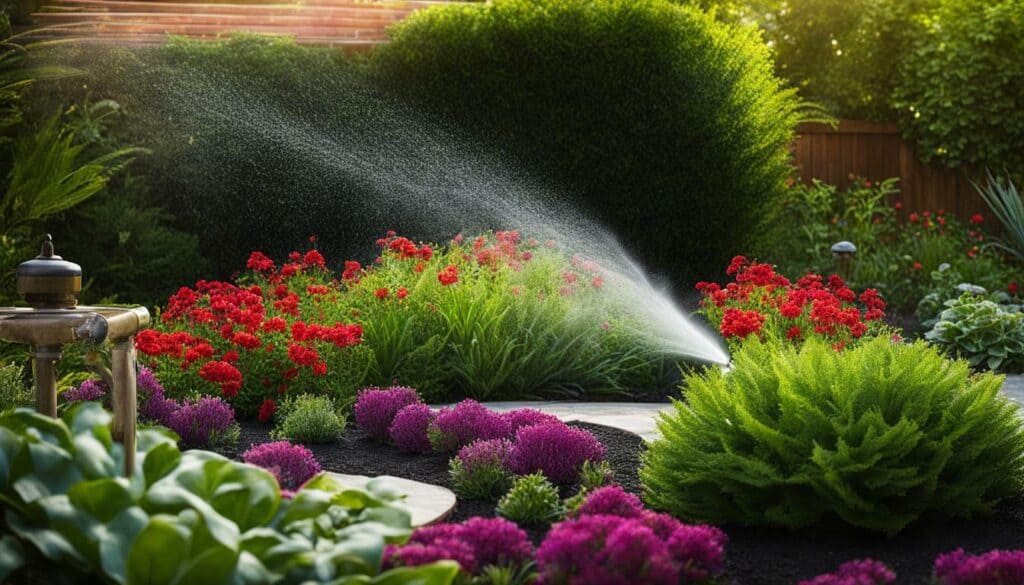
Having a Watering System in Place
It’s also important to have a watering system in place to ensure your plants receive adequate water. Implementing a watering system, such as an automatic system with a timer, can save you time and ensure consistent watering.
There are a few options when it comes to watering systems. Drip irrigation systems are a popular choice for backyard gardens because they deliver water directly to the roots, reducing water waste and allowing for targeted watering.
You can also opt for a sprinkler system, but be aware that they can waste water and may not be suitable for all plants. Whichever system you choose, make sure to adjust it as needed based on the weather and the water needs of your plants.
Finding a Planting Guide
When starting a backyard garden, it’s important to reference a planting guide specific to your area. A planting guide will provide information on the best time to plant, how to plant, and how to care for your plants.
You can find planting guides online or through your local cooperative extension office. The cooperative extension office can also provide soil testing services to ensure your soil is nutrient-rich and suitable for growing plants.
By having a watering system in place and using a planting guide, you can ensure the success of your backyard garden and enjoy a bountiful harvest.
Spending Time in the Garden and Enjoying the Harvest
Spending time in the garden each day and harvesting and eating what you grow are the final steps in mastering how to make a garden in the backyard. After all the hard work you’ve put in, it’s important to take the time to enjoy your garden and the delicious foods it produces.
One of the best backyard gardening tips is to visit your garden daily. Not only does this give you the opportunity to observe the growth of your plants, but it also allows you to identify any potential problems early on and take action before they become major issues. Spending time in your garden can be a peaceful and rewarding experience, and it can also provide a sense of accomplishment and pride.

When it comes time to harvest your crops, be sure to do so at the right time. For most vegetables, this means harvesting when they are ripe but not overripe. Overripe vegetables can be less flavorful and lack the nutrients of their fully matured counterparts. Once you’ve harvested your crops, be sure to incorporate them into your meals for a truly satisfying experience. There’s something special about eating food that you’ve grown yourself, and it’s a great way to connect with nature and appreciate the value of hard work.
Creating a DIY backyard garden may seem overwhelming at first, but with the right steps and mindset, it’s a simple and enjoyable process. Remember to start small, consider the climate and sunlight of your area, and to enjoy the process of seeing your plants grow and flourish. With dedication and patience, you’ll soon be able to harvest delicious crops and enjoy the fruits of your labor.
Conclusion
In conclusion, creating a garden in the backyard is a rewarding and achievable endeavor with a few simple steps. First, decide what you want to plant, such as vegetables, herbs, flowers, or a combination. Next, choose a garden spot with ample sunlight and easy access to water. Clear the ground of weeds and sod before starting, using either the cut-out method or the lasagna gardening method. Test and improve your soil to ensure optimal plant growth, and prepare your planting beds by loosening the soil and adding organic matter. Choose plants suitable for your climate, soil, and sunlight conditions, and plant according to the recommended planting guide for your area.
It is important to water your plants at the right time and ensure they receive adequate moisture. Spending time in your garden each day will help you observe and manage any problems that may arise. Harvest and enjoy the fruits of your labor, and continue to care for your garden to ensure its success. Remember, starting small and learning as you go is the key to a successful garden.
FAQ
Q: What should I consider when choosing what to plant in my backyard garden?
A: It’s important to start small and choose plants that are adapted to your climate, soil, and sunlight. Consider whether you want to plant vegetables, herbs, or flowers.
Q: Where is the best spot in my backyard to create a garden?
A: Look for a spot that receives 6-8 hours of full sun each day and has easy access to a water source. Consider your garden layout and design ideas.
Q: How do I clear the ground of weeds and sod?
A: You can either cut out the weeds and sod or use the lasagna gardening method, which involves layering organic materials to smother and break down the weeds and grass.
Q: How do I test and improve my soil?
A: Testing your soil is crucial, and you can add organic matter like compost to improve its fertility. There are various tips and techniques for enriching the soil.
Q: How should I prepare the planting beds in my backyard garden?
A: It’s important to loosen the soil before planting to promote root growth and nutrient access. There are specific tips for properly preparing the planting beds.
Q: Should I start with seeds or seedlings?
A: You can choose to start with either seeds or seedlings, depending on your preference and the plant’s requirements. Consider the climate and growing conditions.
Q: What are some important factors to consider in backyard gardening?
A: Consider companion planting, garden design options like raised beds or inground gardens, and the benefits of vertical gardening. These factors can enhance your garden.
Q: How can I optimize my garden soil and remove grass?
A: You can optimize your garden soil by adding compost and improving its fertility. If necessary, you can remove grass to create space for your garden beds.
Q: Do I need a watering system for my backyard garden?
A: Having a watering system in place can ensure your plants receive adequate moisture. Different watering methods can be used, depending on your garden’s size and needs.
Q: Where can I find a planting guide for my specific area?
A: Look for planting guides specific to your location to ensure you’re planting at the right time and choosing suitable plants. There are resources available online and in gardening books.
Q: What should I do in my backyard garden every day?
A: Spend time in the garden each day, tending to your plants, watering as needed, and observing their growth. Enjoy the process and take pride in your garden.
Q: How can I enjoy the harvest from my backyard garden?
A: Harvest the fruits, vegetables, herbs, or flowers from your garden and savor the satisfaction of eating what you grow. Enjoy the flavors and share with family and friends.
Source Links
- https://growinginthegarden.com/gardening-for-beginners-how-to-start-a-garden-in-8-simple-steps/
- https://www.bhg.com/gardening/yard/garden-care/ten-steps-to-beginning-a-garden/
- https://www.thespruce.com/how-to-start-a-garden-from-scratch-2132778
- https://www.npr.org/2020/04/17/837300800/this-is-a-good-time-to-start-a-garden-heres-how
- https://www.bhg.com/gardening/vegetable/vegetables/planning-your-first-vegetable-garden/
- https://www.almanac.com/vegetable-gardening-for-beginners
- https://www.gardensthatmatter.com/choose-garden-location/
- https://www.almanac.com/where-put-vegetable-garden
- https://growitbuildit.com/how-to-remove-grass-clear-sod-for-a-garden/
- https://www.finegardening.com/project-guides/gardening-basics/4-ways-to-remove-sod
- https://www.almanac.com/how-remove-grass-garden-bed
- https://www.almanac.com/soil-preparation-how-do-you-prepare-garden-soil-planting
- https://extension.oregonstate.edu/catalog/pub/ec-1561-improving-garden-soils-organic-matter
- https://www.gardeners.com/how-to/building-healthy-soil/5060.html
- https://www.almanac.com/content/how-build-raised-garden-bed
- https://awaytogarden.com/soil-preparation-7-ways-to-make-a-garden-bed/
- https://www.gardenary.com/blog/should-you-plant-seeds-or-plants-in-your-garden
- https://www.thespruce.com/vegetable-garden-seeds-or-seedlings-1403412
- https://www.gardendesign.com/vegetables/companion-planting.html
- https://www.almanac.com/companion-planting-guide-vegetables
- https://www.almanac.com/planning-companion-planting-garden
- https://www.hgtv.com/outdoors/landscaping-and-hardscaping/beds-and-mulch/4-ways-to-convert-lawn-to-a-flower-bed
- https://thehouseonsilverado.com/setting-up-an-automatic-watering-system-for-outdoor-plants-hanging-baskets/
- https://www.familyhandyman.com/project/how-to-install-an-irrigation-system-in-your-yard/
- https://anoregoncottage.com/diy-garden-watering-system/
- https://savvygardening.com/patio-vegetable-garden/
- http://lizfabry.blogspot.com/2012/11/garden-update.html?m=1
- https://www.betterhealth.vic.gov.au/health/healthyliving/gardening-for-children





Leave a Reply